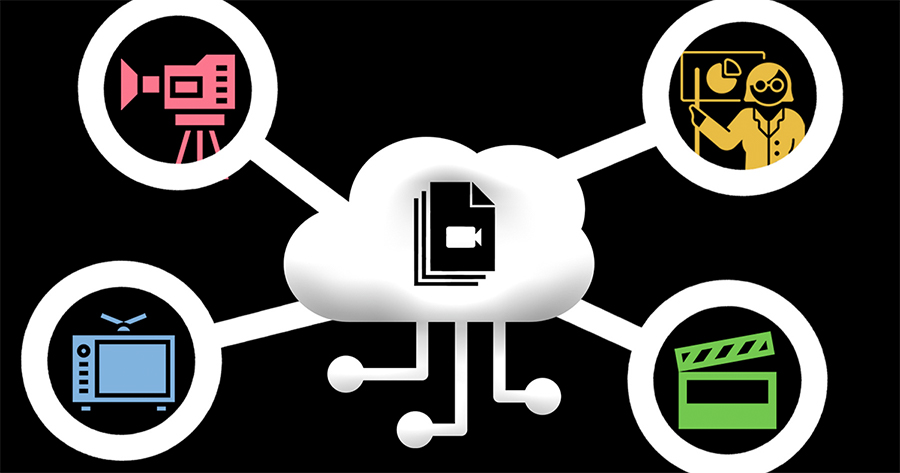By its very nature, the moving image is a collaborative medium. A major film, for example, is a singular work that’s the result of the crafts and trades of hundreds of different collaborators. While educational media production doesn’t quite reach that scale, the challenge of reflecting the academic instructor’s expertise and learning objectives into a film is just as important and challenging.
Generally our media productions involve partners who are content experts—for example, a faculty member in a specific field. The CTL media team transforms the course content into the actual video. The production staff are not content experts, and the content experts are not production staff. A particular area where this presents challenges is post-production, specifically editing.
When producing content, most courses follow a similar workflow: The instructor will prepare a lecture and at least wireframes of slides; the lecture is recorded and passed on to the editor and/or animator. The editor produces a rough cut of the content, often recreating the slides as “picture ready” graphics. This rough cut is shared back to the course team for review, who provide their notes back to the editor. Corrections and revisions are applied and a fine cut is again shared, with the feedback process repeating. Finally a deliverable asset is readied, given a once over, and published.
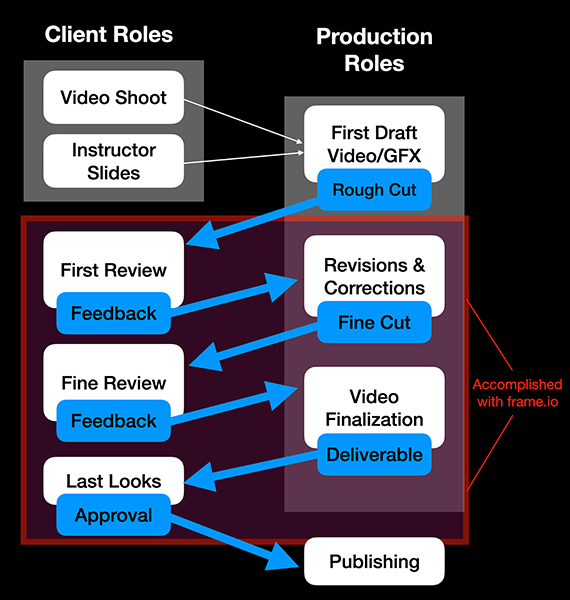
In the past, we’ve collaborated with various stakeholders by simply sending them a link to the draft video, and receiving feedback noting the time in the player. To refer to a point in the video, the stakeholders would reference a specific time, and note the leading and trailing words of the segment they’re identifying.
This process of sending videos for review, receiving feedback, applying revisions, resharing and repeating can have a tendency to be cumbersome and error-prone. YouTube timestamps may not align directly with the editing platform, a granularity of one second is imprecise for video, adding a timecode burn on top of the video can obscure crucial points of revision, and even simply having the notes open on-screen can take up screen real estate from the editing software.
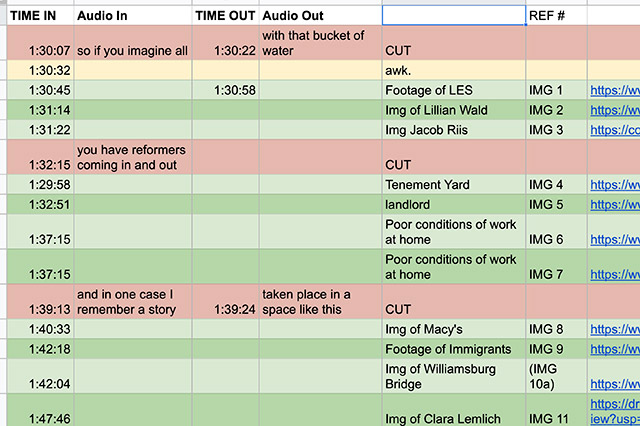
The old way of sharing video feedback
This is exactly where we’ve found an elegant solution. Frame.io allows a video to be shared via a non-public link, and allows collaborators to not only add their notes to a specific video, but add those notes to a specific time in the video. The platform is remarkably intuitive and user friendly.
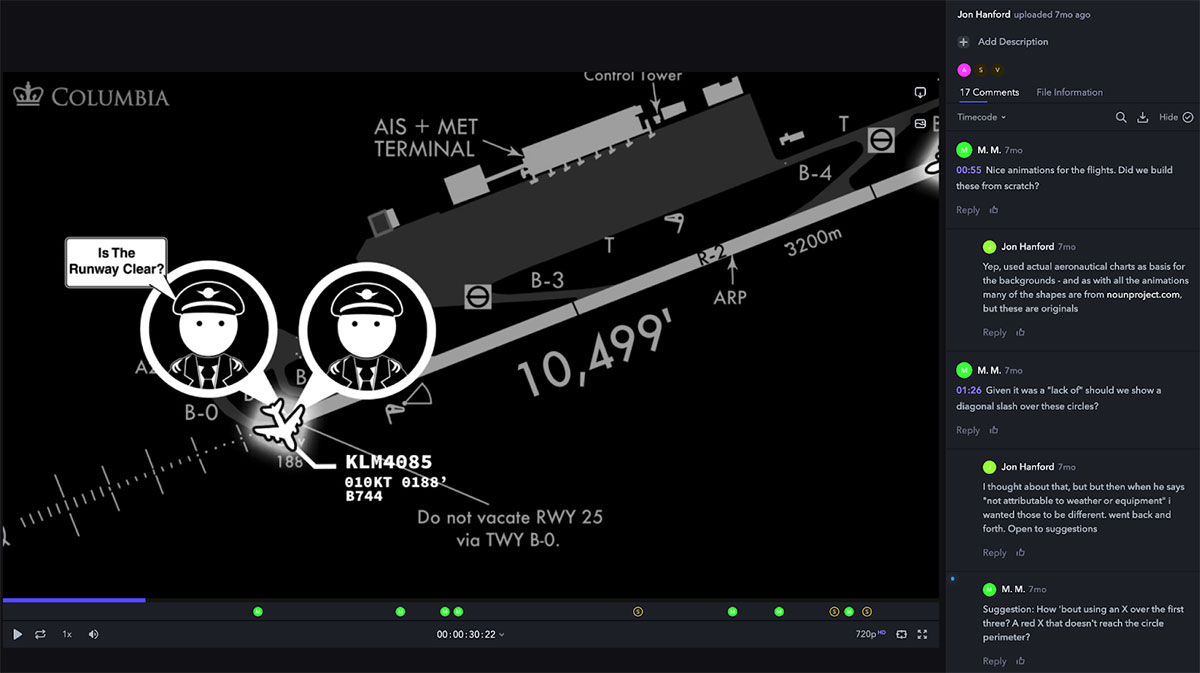
Frame.io interface
Frame.io provides a singular platform that accomplishes both sharing the video with any stakeholders that might need to provide feedback, and giving them a straightforward means to actually share back their notes. Once the collaborator has provided their notes on the video, the platform integrates back in with the editing software to link the submitted contents directly to the edit of the media.

Notes from the Frame.io platform directly in editing software
One prime example of its utility is the production of the Crisis Resource Management open online course. For this course, I was tasked with creating picture-ready animated course graphics to accompany the lectures from the instructor’s draft slides, which were created in Powerpoint. Complex and specific medical scenarios and concepts needed to be translated and abstracted—yet doctors are not animators and animators are not doctors.
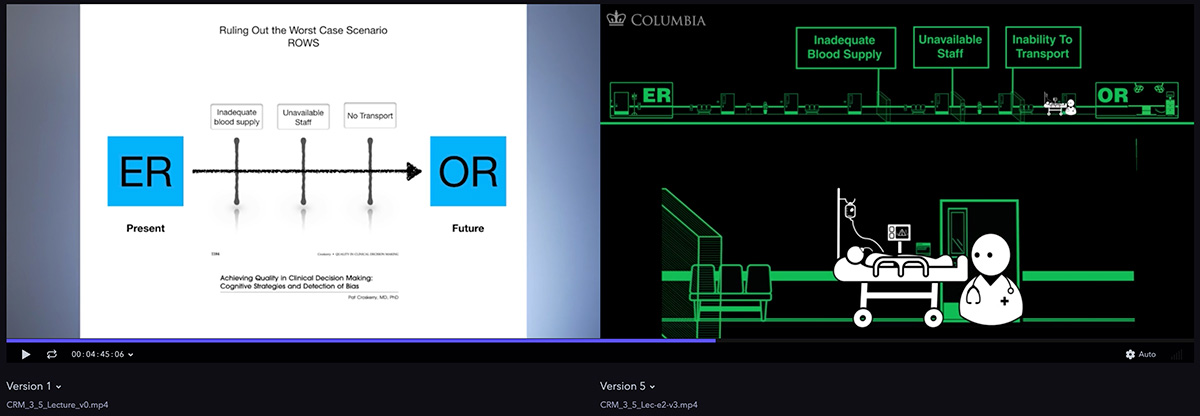
Side-by-side comparison of video iterations
With Frame.io we could share iterations of the video that both internal and external stakeholders could compare side-by-side and directly provide feedback on. Without it, work on this level simply wouldn’t have been possible.
Frame.io is useful beyond interacting with external parties as well. We’ve grown into using it as the primary way of sharing works-in-progress for feedback with the team. We’ve found it especially valuable during times when physically sitting together and reviewing a piece of media is simply not possible—it’s one of the ways we’ve been able to continue our work amid challenging circumstances.
The list of examples where the platform has been invaluable and essential could span volumes. When I asked a colleague for input on the best example to feature, her response was telling.

Facilitating the collaborative work of transferring complex course content between the instructor and the media producer—as well as translating from stills and text into moving images—Frame.io has become a crucial part of our workflow.
Printed from: https://compiled.ctl.columbia.edu/articles/collab-video-frameio/

